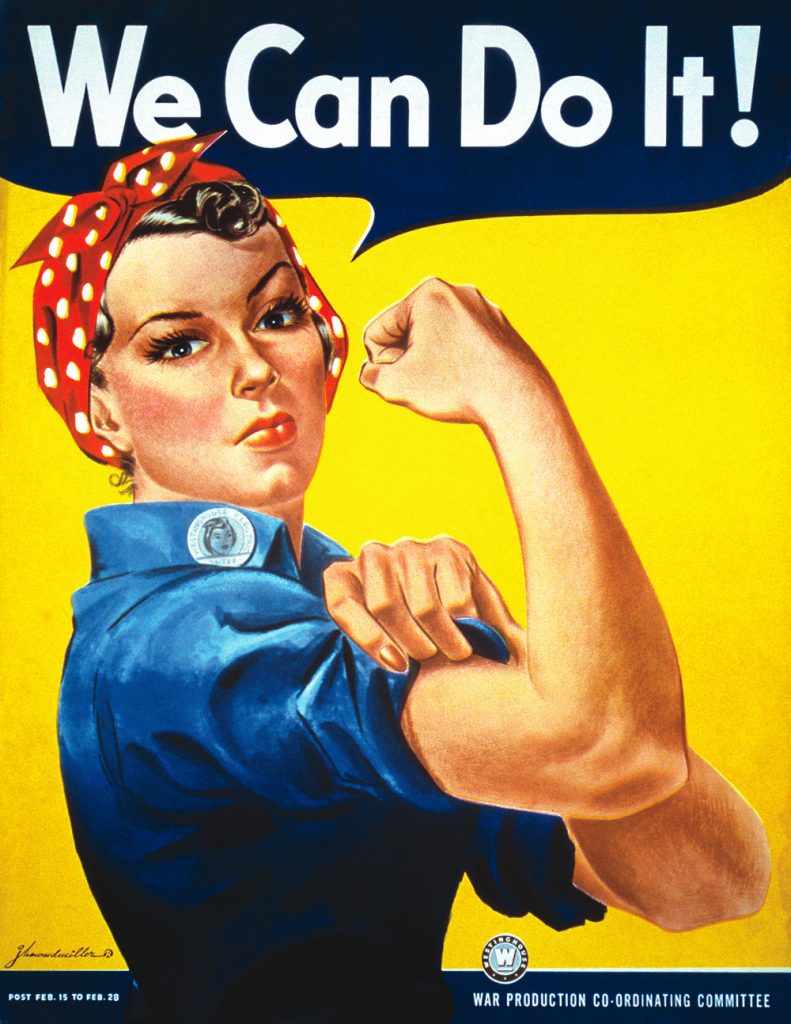The Art: We Can Do It!
The Artist: J. Howard Miller
About the Work:
Propaganda: the artistic epitome of the ‘us-vs-them’ mentality, fuelling every conflict from the local election to the most devastating of wars.
Yet more important than its ability to draw a dividing line between opponents is the need to bring people together. To remind them of their strength, of what they stand for, and what is at stake. The best – or, at least, the most effective – goes further. It amplifies that strength and takes it to new levels.
That’s exactly what We Can Do It! would achieve, albeit four decades after its creation.
The poster was designed by J. Howard Miller, a freelance graphic designer hired by Westinghouse Electric, in 1943. Tensions in the workplace were rife; barely a month had passed since the attack on Pearl Harbour, and the longer work hours required by factory staff to produce the necessary war goods were leaving them on edge. If they did not pick up their pace, and cast aside their displeasure towards management, the government would be forced to step in and overtake production.
To counteract this, management hired Miller to design a range of motivational propaganda posters for internal use. Highlighting unity, and spurred by pro-war sentiment, Miller would create a range of 42 pieces.
As noted in the lower-left corner of the design, the poster was hung throughout factories for a two-week period between February 15th and 28th.
After that, it simply disappeared, and was replaced by the next design in line.
It wasn’t until 39 years later that We Can Do It! was rediscovered and used as part of a Washington Post article on patriotic art. Shortly after, it was re-appropriated for use by the burgeoning feminist movement, the “We” perceived to be a direct comment to women.
Though that was unlikely to be Miller’s intention – though women made up the majority of workers in the factories which the poster hung, they were rarely portrayed as the equals of men – it didn’t matter. We Can Do It! had found new life, and new meaning.
It subverted expectations, drawing on both traditionally feminine and masculine aspects to create a revolutionary depiction of womanhood that adorns more merchandise and promotional material than anything else of its kind, and has been appropriated for use in an array of causes, from politics to the environment.
Today, it remains one of the most enduring and, though its purpose has shifted, perhaps the most effective propaganda pieces of all time.

